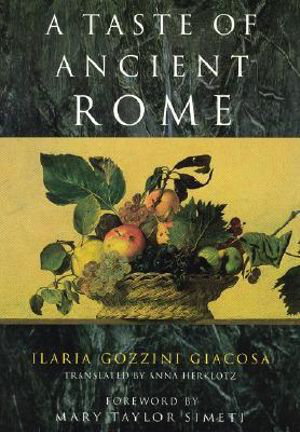
PublishedUniversity Of Chicago Press, February 1994 |
ISBN9780226290324 |
FormatSoftcover, 244 pages |
Dimensions23.8cm × 16.7cm |
Modern Italians still refer to an elaborate dinner as "a meal worthy of Lucullus, " commemorating a Roman general famous more for culinary prowess than any apparent military skill. And our images of ancient Rome usually do include one of an outrageous feast of camel and flamingoes and nightingales' tongues.
But, as Ilaria Giacosa reminds us in this fascinating book, Romans did not eat the exotic every day. Here are the real foods of Rome - the rustic and the refined - in more than 200 tested recipes adapted for today's kitchen. Drawing on the writings of Apicius, Cato, Martial, Petronius, Juvenal, and other observers, Giacosa recreates a 2,000-year-old cuisine, from a hearty winter soup of barley and ham to an elegant salad of truffles in an herbed vinaigrette, from appetizers to desserts. Each recipe includes the original (in Latin and translation) and a modern rendering, with substitutions for difficult-to-find ingredients. The repertoire is wide and includes along with more exotic creations solid, satisfying dishes that still grace many Italian tables: a frittata or omelet of young asparagus and sharp Romano cheese; roast chicken with leeks and a garden of green herbs; a salad with peasant bread and cracked olives; and a fresh cheese pie scented with bay and honey. You'll find recipes for breads, porridges, and sauces, including the ever-present garum, which, Giacosa notes, is not very different from the soy and fish sauces of Asia; a guide to preserving fruits and vegetables; seasonal menus for everyday and elegant dining; and a rich social history of Roman eating, drinking, shopping, and entertaining. This is cooking before tomatoes, pasta, oranges, lemons, or even coffee enteredthe Mediterranean diet. Yet with its intriguing sweet-sour flavor combinations, its lavish use of fresh herbs and fragrant spices, and its base in whole grains and fruits and vegetables, the foods of Rome will be a revelation to serious cooks ready to create new dishes in the spiri

